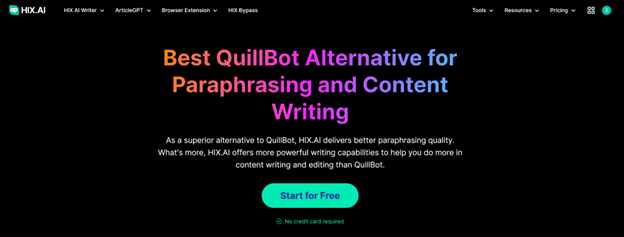Workforce analytics is an important practice in today’s dynamic and competitive business environment. It includes collecting and analysing various types of data related to the workforce, both from internal and external sources, with the aim of transforming these insights into actionable information. Unlike people analytics, which focuses mainly on individual employees, workforce analytics takes a broader perspective that includes all aspects of work within an organisation. This article explores the concept of workforce analytics software and other important details.
Table of Contents
The Importance of Workforce Analytics
Workforce analytics is essential for several reasons:
- It aids macro-level planning to improve business operations and performance.
- It saves time and expenses by making data-driven decisions.
- It contributes to creating a cohesive team and improving corporate culture.
- Employee sentiment data helps identify areas for improvement and informs recruitment strategies.
Benefits of Workforce Analytics
The broad scope of workforce analytics results in company-wide benefits, including:
- Decreasing employee turnover by identifying triggers such as lack of training or promotion opportunities.
- Efficiently assessing the effectiveness of recruitment strategies.
- Identifying areas for labour cost reduction by optimising processes.
- Predicting future workforce needs based on turnover rates.
Enhancing overall business performance through HR-related actions like talent retention
Workforce Analytics in Action
Workforce analytics data has its application in three major categories: recruitment, retention, and talent management.
Recruitment
Recruitment is a critical area where workforce analytics can bring substantial benefits. It enables organisations to:
- Automatically scan public resumes, saving time and effort.
- Conduct background checks and social media screenings to assess candidate suitability.
- Shortlist potential candidates based on predefined criteria.
- Match potential candidates with existing talent more effectively.
- Decrease recruitment costs by streamlining the hiring process.
- Mitigate race and gender bias in the recruitment process through data-driven decision-making.
Retention
Workforce analytics plays a vital role in employee retention efforts by:
- Tracking compensation rates for high-performing employees who may be under-acknowledged.
- Identifying behavioural patterns that correlate with high productivity.
- Recognising early signs of potential employee resignations, allowing for proactive intervention.
Talent Management
In talent management, workforce analytics provides opportunities for:
- Setting performance checkpoints to measure and support future potential.
- Identifying training or skill gaps to offer relevant learning opportunities.
Implementing Workforce Analytics in Your Business
To effectively implement workforce analytics in your organisation, follow these fundamental steps:
- Purpose Identification: Begin by determining why you need workforce analytics. Ask essential questions about the desired business outcomes. For instance, do you want to enhance employee engagement, reduce turnover, measure training effectiveness, or address other specific concerns? Identifying a clear problem or objective will help shape the data requirements statistical models, and establish Key Performance Indicators.
- Define the Key Metrics: Once you’ve identified your objectives, define the specific metrics to track. For example, if you aim to increase employee engagement, establish metrics that quantify employee motivation or the effectiveness of incentive programs. If addressing skill gaps is the goal, then follow the metrics like training results, departmental benchmarks, and their correlation with employee survey results. Depending on your specific goals, you may need to track various metrics.
- Communicate Purpose: Clearly communicate the purpose of your workforce analytics program to all stakeholders. Begin with business leaders to outline your goals and strategies. Engage managers who are likely to be the primary users of the analytics. Then, involve team members, allowing them to ask questions and fostering a culture of transparency and trust.
- Collection of High-Quality Data: Gather high-quality and ethically sourced workforce data. This could encompass demographic information, skills data, performance records, training completion data, and employee survey results. Utilise various data collection methods, such as automated software, employee surveys, cloud analytics, performance trackers, manual data collection, and labour market data.
- Data Hygiene: Ensure data cleanliness and quality by conducting basic data hygiene practices. Address legal concerns and align data privacy and security standards with project goals to maintain ethical standards.
- Present Results: Conduct the selected analysis and present the findings to relevant business leaders and stakeholders. Document and format the data in an easily understandable manner. Utilise visuals like charts and graphs or create comprehensive reports to facilitate comprehension of the workforce analytics
- Take Action: With the analysed data in hand, collaborate with the HR department and management team to develop and implement a strategy for addressing identified issues. Continuously evaluate hypotheses and explore data-driven solutions. While this process may not be swift, it will eventually lead to data-backed decisions that can effectively address long-standing business challenges.
Predictive Workforce Analytics
Predictive workforce analytics is a significant aspect of workforce analysis. It involves using historical data and statistical models, such as machine learning and data mining, to make predictions about future workforce trends and outcomes. Predictive analytics helps organisations forecast risks and talent outcomes accurately. Know more about Change the Way you Approach Workforce Analytics.
Prescriptive and Diagnostic Workforce Analytics
In addition to predictive analytics, organisations also utilise prescriptive and diagnostic workforce analytics:
- Prescriptive analytics checks the best course of action based on predictive analysis results. It helps organisations plan and mitigate workforce challenges effectively.
- Diagnostic analytics focuses on identifying the causes of past workforce failures or successes. This information helps optimise business performance.
Workforce Analytics vs. HR Analytics
While workforce analytics and HR analytics share similarities, workforce analytics has a broader scope. It includes firm-wide insights into the workforce and extends beyond individual employee analysis. Its primary purpose often revolves around improving the retention of top-performing employees and optimising overall business performance.
Workforce Analytics Tools and Software
The evolution of workforce analytics is supported by various software solutions designed to analyse employee-related data. The workforce analytics tools use AI and machine learning to turn data into actionable insights. They offer features such as automated data collection, predictive analysis, benchmarking, and reporting.
Conclusion
Organisations may make data-driven decisions, enhance workforce management, and build a more effective and engaged staff by gathering, structuring, and extracting meaningful insights from employee data. The usage of AI, improving the candidate experience, and bolstering long-term talent planning are all key focuses for ProHance best workforce analytics software and the future of workforce analytics. To succeed and remain competitive in the current business environment, it is essential to embrace workforce analytics. For that reason, ProHance equips you with unique tools that make it hassleless to assess workforce engagement and productivity.



![Best Free Mobile Remote Desktop App [iOS & Android] Free Mobile Remote Desktop App](https://techniciansnow.com/wp-content/uploads/2024/01/Free-Mobile-Remote-Desktop-App.jpg)




